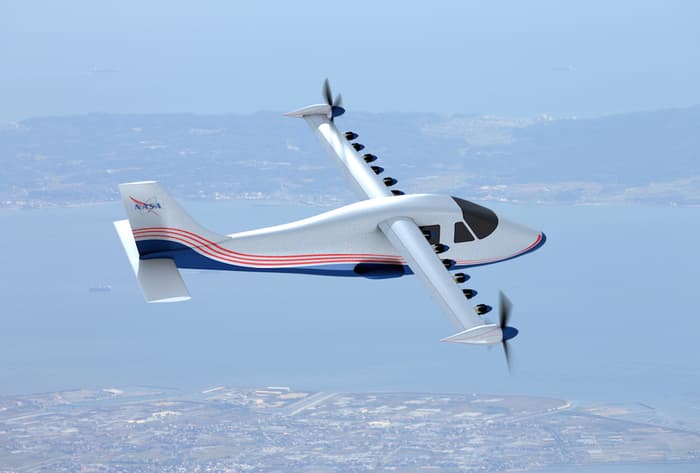This past winter, NASA announced it was going to bring back its X-planes, a series of experimental aircraft designed to test new technologies, dating back to the first plane to break the sound barrier in 1947. The newest member of the family, X-57, was just revealed, sporting 14 electric motors driving 14 propellers. Its mission? To test greener propulsion technologies.

X-57 will showcase greener propulsion technologies. Image source: NASA.
Nicknamed “Maxwell,” the X-57 is first X-plane designed by NASA in a decade, marking the beginning of New Aviation Horizons, a 10-year initiative aiming to drive the general aviation industry’s adoption of technologies that reduce fuel consumption, emissions, and noise pollution.
Maxwell’s specially-designed wings will be equipped with seven propellers, each powered by their own electric motor. This totals to 14 propellers and 14 electric motors, 12 of which are positioned on the leading edge of the wings and will be used for taking off and landing, while a larger motor at each wing tip is set to be used at cruising altitude.
With a key mission to demonstrate the energy efficiency of electric motors, Maxwell is specifically aiming to show how spreading the power among multiple motors could allow it to consume one-fifth of the energy that a normal private plane would while cruising at 175 MPH. Other benefits include the elimination of carbon emissions thanks to battery power, and as a result, decreasing the demand for the lead-based fuels which are common within the aviation industry.
The plane’s increased efficiency is expected to reduce the operational cost by as much as 40% for small aircraft, and since the fuel consumption associated with flying at higher speeds will be negated, flight times will likely be shortened. And quieter electric motors obviously mean less noise for people on the ground.
To build the prototype, NASA’s Scalable Convergent Electric Propulsion Technology Operations Research (SCEPTOR) project will modify a Tecnam P2006T light aircraft, as part of a four-year flight demonstrator plan. Eventually, the X-57 will be joined by up to five larger, transport-scale X-planes, which will also be designed to test greener technologies.
Source: NASA
Advertisement
Learn more about Electronic Products Magazine





